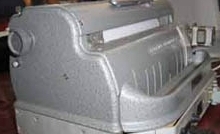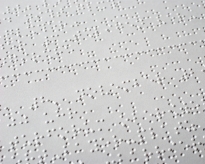Ownership and Leadership [thoughts]
In an industrial situation it is important to have ownership of work clearly defined. When I was still in academics, since ownership came to me naturally, I used to think that each and every person strives to gain ownership. With professional experience I have noticed that, my assumptions were not quite accurate. However, the importance of ownership is not diluted in any sense. To me, it’s still the shortest path that leads to success.
Once, I asked a senior leader how he decides on who would own a piece of work. He smilingly said, “It’s whoever is losing most sleep over it”. It was a joke but also has a lot of truth hidden. Ownership does lend more than a few sleepless nights. However ownership does not start or end at professional life. We own many things. We own our health, we own our relationships, a house maybe, car, etc. Does everyone take equal care of what they own? Probably not. This becomes the first differentiator.
Another prime aspect is leadership potential. When the bell tolls, who do the people follow. In my experience, a professional relationship is still a relationship. The days of power and hierarchy are gone. Today most work is done by means of influence, mutual rewards and trust. Relationship maintenance is an everyday job. People follow a leader because they trust their judgment. Hence a leader’s credo is mostly earned. Being outstanding at ones field becomes a prerequisite for professional leadership. However such skills do not guarantee that a person will make a great leader. The next differentiating factor becomes social skills. Not being able to connect and communicate with a person the way they respond make every step forward a battle.
The next item, I would include in this checklist is the big picture, understating of the business. Success is often a direct measure of value a person adds. Success might lag behind the value scale, but seldom leads. Which leads us to the question, what is value, in a general term. The biggest expenditure of most corporations is its people. That is, the price of salary and benefits. However, in today’s market, to keep the market happy and investors interested, companies must achieve a certain margin in profits. Profits being defined as net revenue minus costs. So to create more value, a company might work on increasing revenue or cut costs. Or often, both. Creating more value, is often misunderstood as putting in more hours. This is absolutely not the case. Hours might be a short term supplement, however in the long term, it has little value and is not sustainable. Creating more value can fall into doing revenue generating activities that were not done before, or doing something that already generates revenue but finding a way to do them faster, or doing something that already generates revenue, but doing them cheaper. One point to note, that all the above come with the assumption that quality and other metrics remains the same.
The question is how to find these things? Taking a look at the balance sheet and calculating back is a great way to start. Where profit/cost ratio is highest, is probably where the most value is. If a piece has high revenue but low profit/cost ratio it would be a great place to think of adding value. As the observation directly indicates that there is a possibility of optimization.
This does not limit itself to professions. However the dynamics for very small companies is a little different. To sum it up, a leader always keeps the value proposition in mind. They take ownership, they develop strong professional relationships, they are experts of their field and they are ready to roll up their sleeves and get the job done.
Intel and Optical Lithography
In 2005 I started working for Intel Corporation. It has been a tremendously exciting time of learning and growth. More about my involvement and learnings will be included in later posts. One question, however, I would like to address, because I get it so often. What is lithography?
The word "lithography" itself has its origins in the Greek word lithos, "stone" and graphein, "to write". It was originally coined as a term used for printing. More on the history here. In terms of semiconductor manufacture, lithography is the process of using lasers to cut through silicon, in a multistep process to create certain desired structures. Structures that connect across a three dimentional space and form little transistors, billions of them, in the thickness of a human hair's cross section.
To give you an idea in my own words. Think about a city the size of New York City. Imagine all the roads and all the buildings. Now think of all the electrical connections, up to the detail of each electrical outlet on each wall, that level of detail. Now think of a futuristic City, with thirty plus levels of roads, vertically stacked one on top of the other, each level connecting to levels above and below at certain points via onramps and offramps. Now take that mental thirty level city and shrink it down to the size of your thumbnail. That is about how much detail goes into a microchip. These details are carved on of silicon using lasers. This process is lithography. If you have used a computer or laptop in the last seven - eight years, you have used a tiny little amount of my work.
How is it done. Here is a three minute video -
To be continued...
A world without light
It was summer vacation from first year of engineering and people were preparing to go home. At eighteen years age, going on to be nineteen, I was looking to make some money during summer. School was not getting any cheaper and the three kids I was tutoring would graduate soon. Unbeknownst to me, I would stumble into something that I would both fuel me and fund me for the next four years of my life.
Tucked in a corner of the top floor was the braille lab. A room with three computers, a little 6”x12# flat box with few big buttons and a typewriter looking device that that been retrofitted with electronics and pinned heads to type special braille characters.
Let me take a step back. This is about, how we can help blind people use digital media? Braille is the alphabet used by the blind. It has the same alphabet as other languages, however it is written on paper using a combination of six embossed dots [eight dots on the unified braille system]. Shown below.
A person who knows how to read braille, would touch a sentence of braille characters just as most of us would scan the sentence with our eyes and they would read the sentence just like us. While we could use text to speech engines, to convert text to sound, try listening to a text book in the monotone of a robotic reader. In addition, try reading at your own pace, starting and stopping when you want. But we could not just print the whole internet for every individual blind person either, that would cost a fortune. The solution is an array of holes, six at a time arranged in a line. Pins would come out from below the holes making each combination of six a character and the whole array would form a sentence, when the reader is done reading a line, they will press the “Next” button and the pins will drop down, a new combination of pins would float up, now representing the next sentence. See example below.
The keyboard will also consist of basic navigation keys and keys representing these dots with which a blind user can type. And a printer consists of an electronic-mechanical device, just like the old hammer head typewriters that could with the strike of a hammer, emboss a braille character on a thick piece of paper.


At the time such systems were available in English. But a major part of the Indian population did not have access to English education. Leave alone those born with blindness. Our job was to create a local, affordable technology that would work with Indian languages. Off I went learning Nemmeth Braille and spending the midnight oil, working on these systems. We would venture on Natural Language Processing, for more expressive, non-monotonous, readouts. Concepts of human speech like intonation [how we adjust our tonal structure and voice according to the nature of our speech, such as asking a question means we use sharper tones towards the end of the sentence, as opposed to giving a command means we use higher bass at the end of the sentence] and prosody [the natural rhythm of speech. How we adjust the rhythm based on our emotional state] came into the context of our research. Another thing of note that happened while working for the blind was that I started noticing the significance of nonverbal communication. The presence of an international language, which is spoken through the alteration of physical presence and facial expressions, carried through energies and emotions, which does not require shared language, like a smile, a frown, a tear or a hug, slouchy posture, looking away/lack of attention, things that transpire across language.
The actual implementation of the system crisscrosses many segments of computer engineering and electrical engineering, details of which I will omit for the generally curious reader. We used Java to program our computer systems. ASP for web authentication and server side includes. Unicode was just becoming standardized as an international calligraphy standard and we used it in expressing Indian languages. Couple of years of hard work went by as the project took shape, clear and valuable results were demonstrated.
Early one Thursday morning, during my final year, we packed all our hardware and took a ride on the jeep to a manufacturing company in Calcutta, India. By now our little three computer lab has grown to a full-fledged design center. We had nearly six times the amount of people working for the project. We had found backing from some big players, like, MIT Media Labs and Human Resources Department, Government of India. Today was a big day, we were going to demonstrate our product to a company that might manufacture it and distribute it; making it available to the masses. There was a mix of stress and excitement in my being and I knew I was born for this day. I had a distinct part on the demonstration and hands of training. Three years of involvement with blind people, every question I had regarding their challenges and difficulties faced everyday had already been asked, every fear that they had about me being another guy who makes a lot of promises but does not deliver, [which I found out happens a bit when you are blind], were disproved.
To be honest, I do not remember much of what I said and did that day. It was my first marketing demonstration. From what I hear, it was well delivered, I had answered all questions to satisfaction. The product went into manufacturing. Few months later, I graduated, my work also helped me pay for school. Most importantly I did something I would be proud of till my grave and I will forever be thankful for, light.

